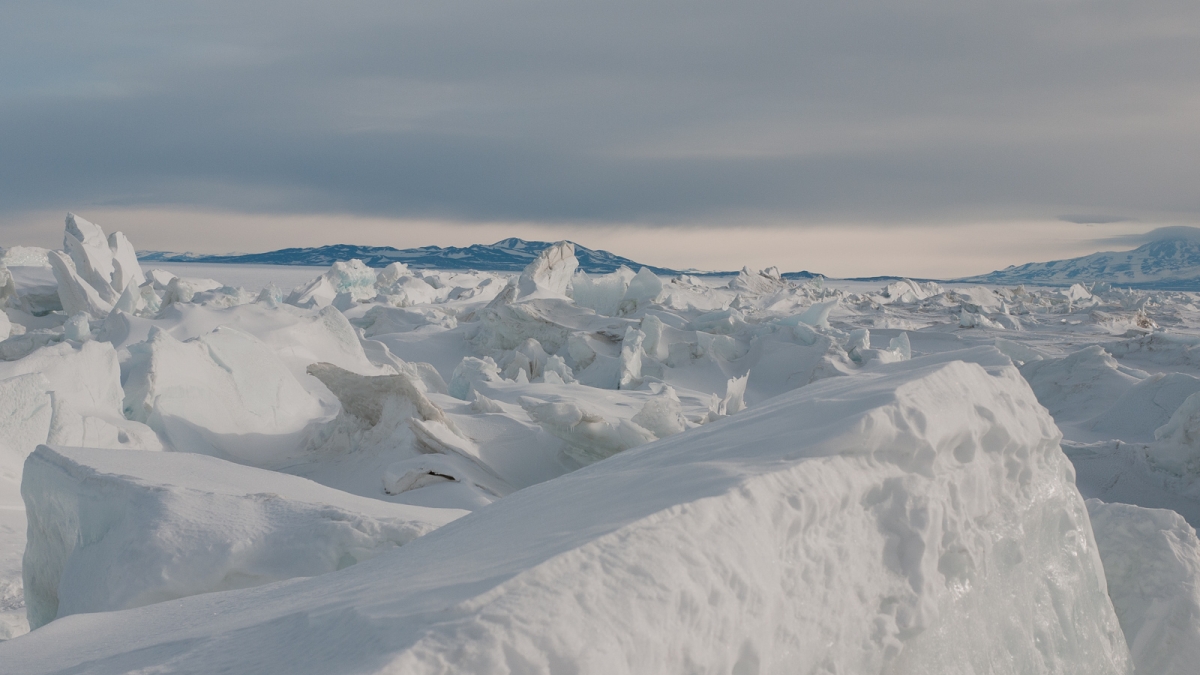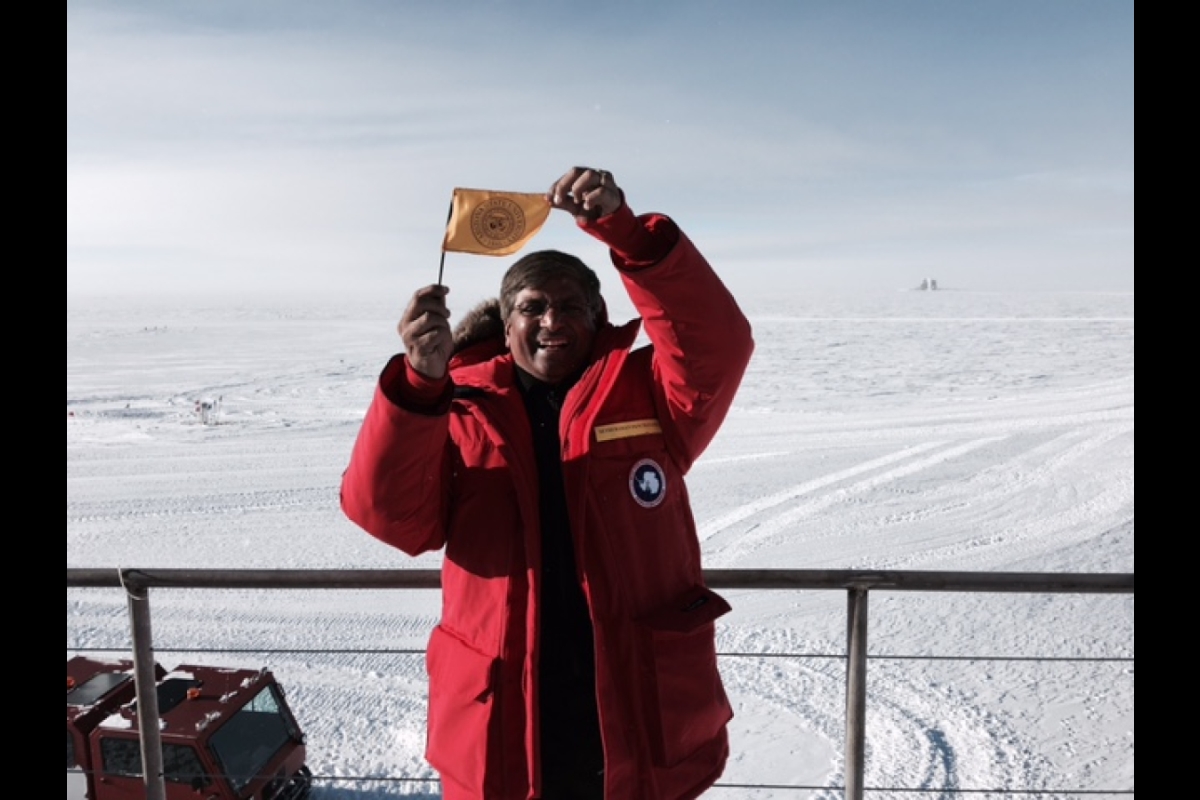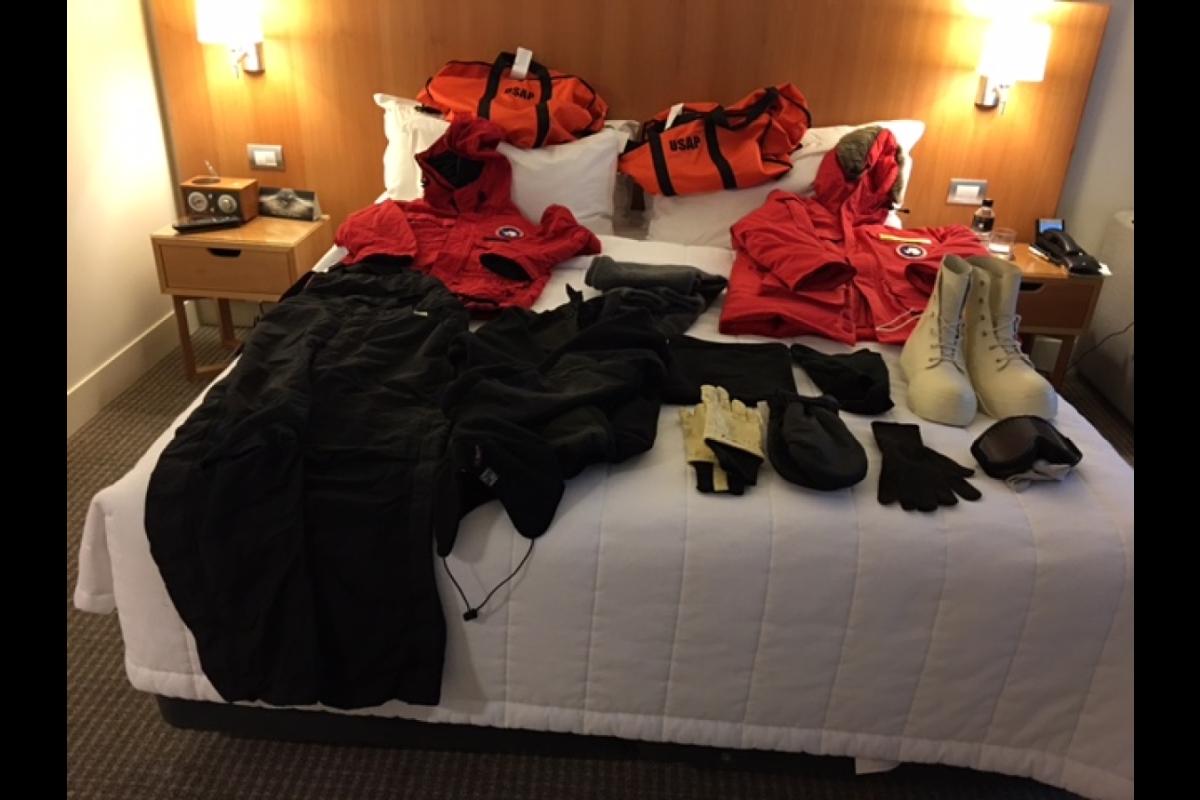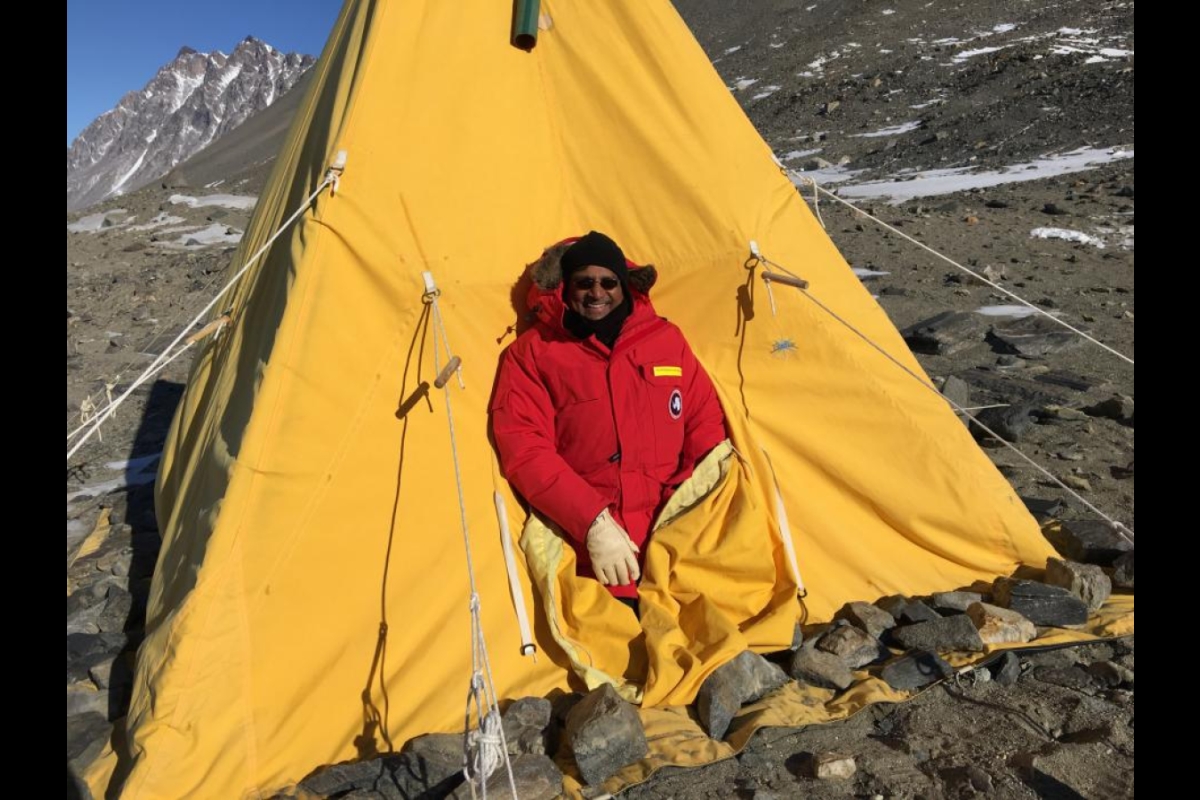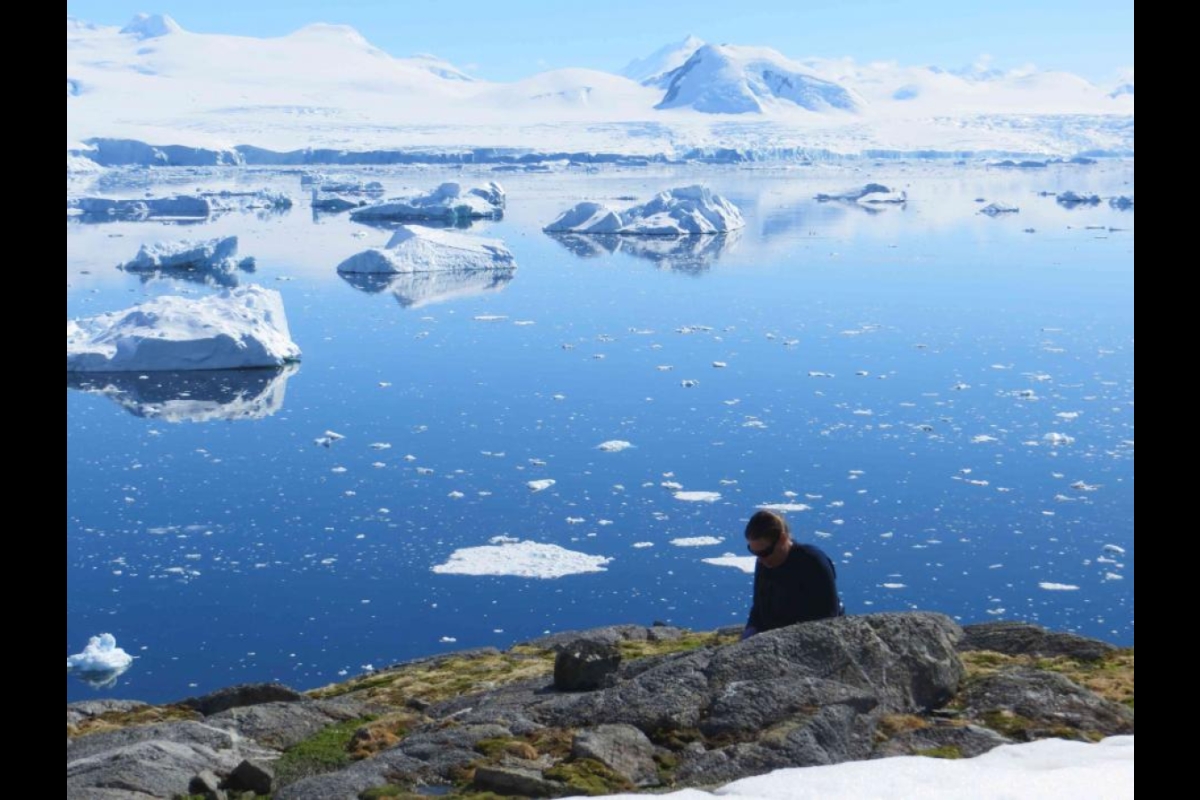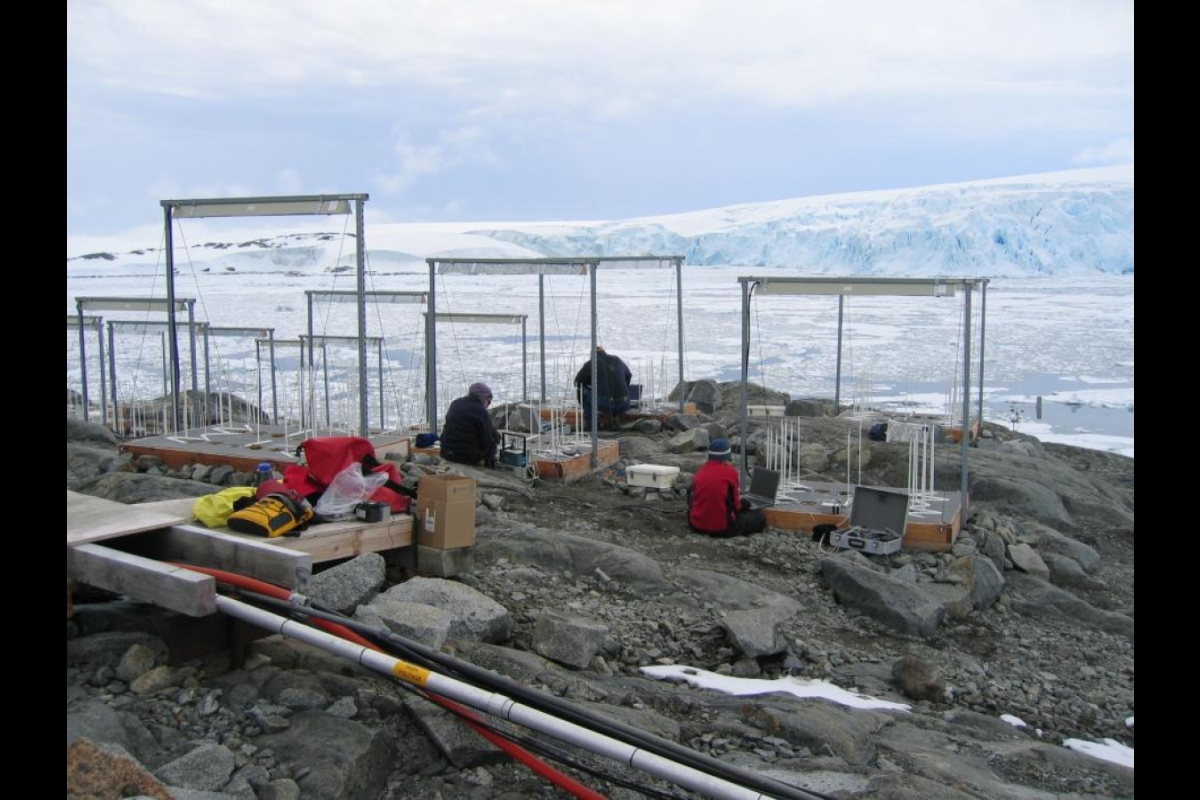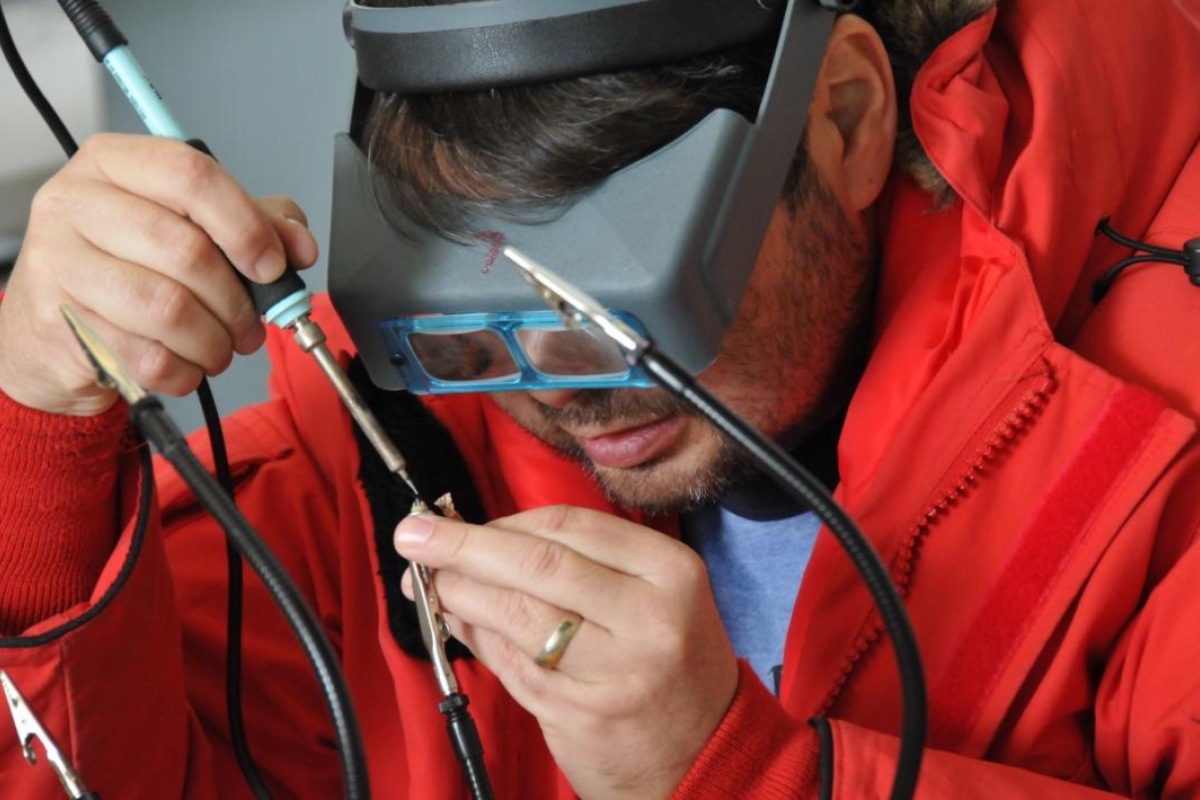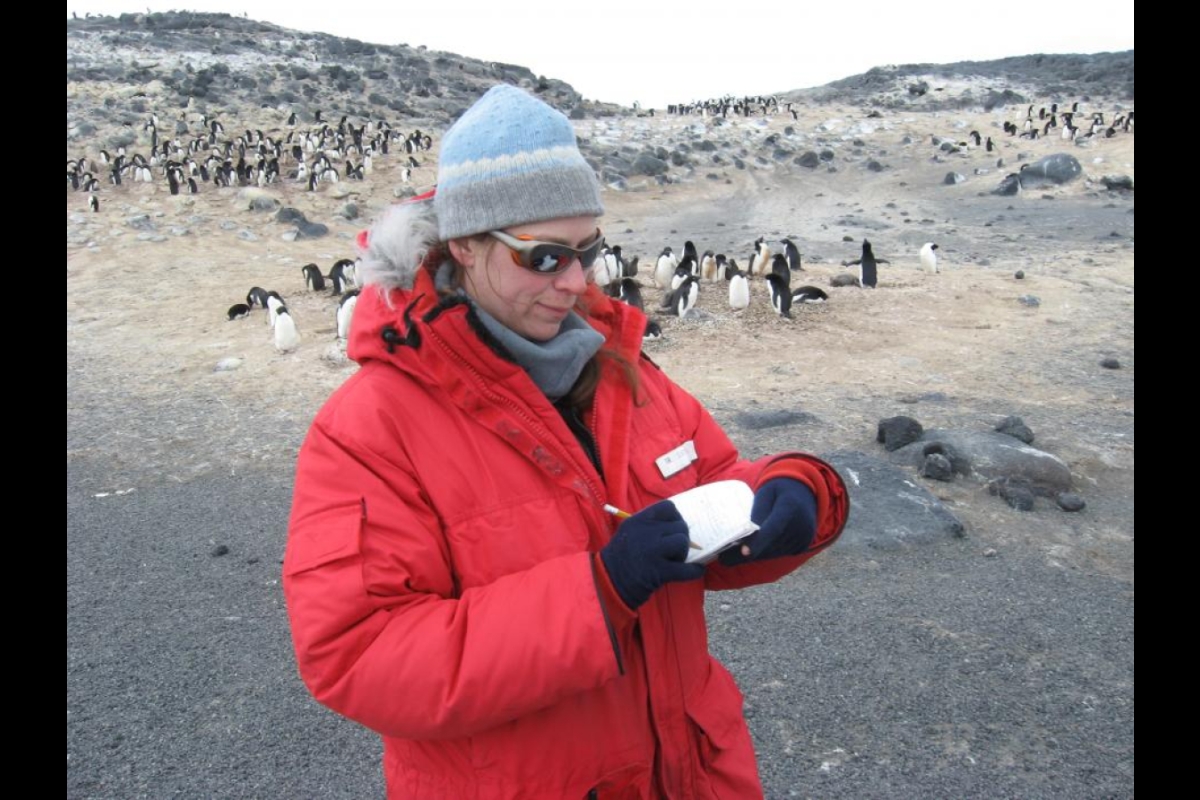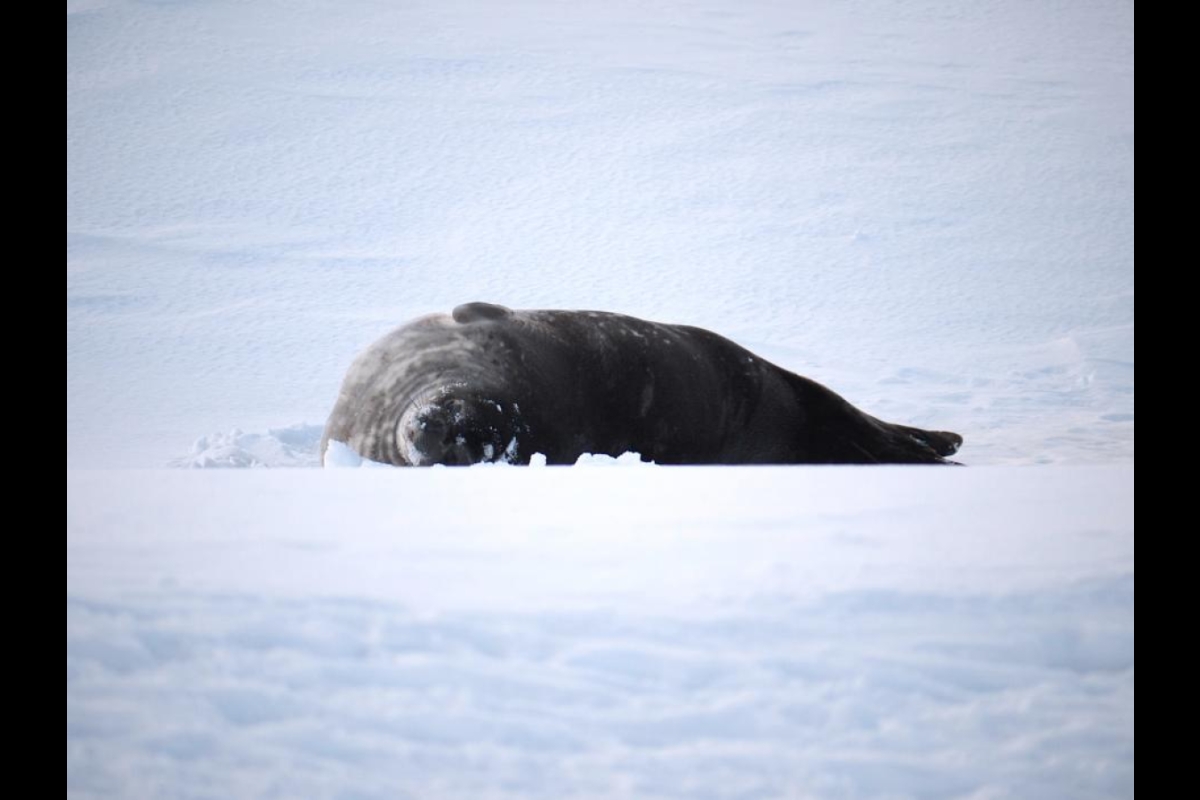Students and faculty at ASU have been digging out their hats, scarves and boots this year as Arizona experienced a colder-than-usual winter. But for Sethuraman “Panch” Panchanathan, ASU’s senior vice president for Knowledge Enterprise Development, this winter has felt positively balmy after a recent trip to Antarctica.
Panchanathan was invited to visit Antarctica with the National Science Foundation (NSF) as part of his role on the National Science Board. Board members, appointed by the president, advise on national policies regarding research and education in science and engineering.
While there, Panchanthan visited multiple research sites and learned about the NSF-funded work happening at each — exploring stars in the night sky, ozone in the atmosphere, life in an extreme ecosystem and neutrinos bombarding the Earth, among others.
“The most exciting part for me was to find the science that’s going on that is done by our graduate students and scientists,” Panchanathan said. “The level of commitment that they have to pursue science, that they will spend that much time in Antarctica, was truly inspirational.”
Although Antarctica is a harsh environment, it is an excellent location for many types of research, according to the NSF:
• Antarctica is an ideal astronomical observatory, with long periods of darkness in the Antarctic winter and no interfering city lights.
• Antarctica is where most of the world’s meteorites are found.
• The Southern Ocean is the largest and most fertile of the world's oceans. Its cold, constant temperatures provide a unique opportunity to study "deep sea" life in relatively shallow water.
• With almost 10 percent of Earth's continental crust, Antarctica holds substantial geologic records of plate tectonic processes, evolution and dispersal of life, and evidence of past environmental conditions.
• In some areas, such as the Dry Valleys, erosion is extremely limited, so fossils of past life have not been destroyed.
• The Dry Valleys are also ideal for studying adaptation to extreme environments.
As Panchanathan was leaving Antarctica, an ASU faculty member, Chris Groppi, and his graduate student Kristina Davis were just arriving. The School of Earth and Space Exploration researchers are among multiple ASU faculty, students and alumni who have visited the coldest continent to learn more about our planet and our universe.
Space balloon
Groppi is an experimental astrophysicist. One of his research projects focuses on uncovering mysteries about molecular clouds. These clouds of gas and dust are the birthplace of new stars and planets. Scientists know molecular clouds exist, but no one knows how they originally formed. They shine in terahertz light, which falls between infrared and microwave radiation on the electromagnetic spectrum.
“Terahertz light is about 5,000 times redder than what your eyes see,” Groppi said.
Earth’s atmosphere absorbs terahertz light before it ever reaches the ground. To see it, Groppi needs to go where the light is visible — about 120,000 feet up into the atmosphere. One option is to build a spaceship, but a better (and 10-20 times cheaper) option is to use a giant weather balloon.
Working with researchers from 12 other institutions, Groppi constructed an experiment that includes a 15-foot tall, 4,000-pound telescope attached to a weather balloon.
The telescope must be cooled down to about -450 degrees Fahrenheit to function properly as it journeys through the stratosphere attached to the balloon. And this is no ordinary balloon: At more than 400 feet in diameter, the Long Duration Balloon is larger than a football field and requires enough helium to fill two semi trucks. It also weighs more than 5,000 pounds.
Antarctica is the perfect place to launch the balloon because of the continent’s weather patterns this time of year. Winds blow in a circle forming the polar vortex. The researchers can send the balloon up into the vortex, where it will make a big circle around the continent and return to the same location in about two weeks.
Groppi has been coming to Antarctica since he was a graduate student. He has worked at both McMurdo StationMcMurdo Station is a U.S. Antarctic research center on the south tip of Ross Island, which is in the New Zealand-claimed Ross Dependency on the shore of McMurdo Sound in Antarctica. — Wikipedia and the South Pole, and says the two locations are quite different.
“McMurdo is a 1,500-person town that has three bars, which are very popular,” Groppi said, adding that it reminded him of “small-town America.” But at the South Pole there are many more people, so it felt less like a town to him and more like a research station.

McMurdo Station seen from the top of Observation Hill. McMurdo is situated near the Dry Valleys of the Transantarctic Mountains and is Antarctica’s largest community.
This and top photo by Chris Groppi.
The coldest desert
Despite the common belief that Antarctica is just a vast expanse of snow and ice, there are actually areas with no ice at all. In fact, McMurdo station is located near the Dry Valleys of the Transantarctic Mountains, which are deglaciated in many places.
That is where Becky Ball has traveled on five separate research excursions. An assistant professor in the School of Mathematical and Natural Sciences in ASU’s New College of Interdisciplinary Arts and Sciences, Ball is a soil bio-geochemist. That’s right, she goes to Antarctica for the soil, which can only be found on the tiny fraction of land — less than 1 percent — that’s not covered by ice sheet.
Ball studies the carbon, nitrogen and phosphorous nutrients in soil and the microbial and invertebrate organisms that help cycle those nutrients. The area where she works is a polar desert, and it’s incredibly dry. The most abundant land animal is a microscopic nematode.
Her most recently funded research will focus on a different part of Antarctica, the Antarctic Peninsula that points out toward South America. For this project, she won’t be stationed on land at all. Ball and her crew, including ASU undergraduate student Connor Wetzel-Brown, will be ship-based, island hopping from top to bottom of the peninsula. They’ll take soil samples along the way at every degree of latitude.
“The climate gets harsher as you go further south, so we’ll look at how climate and other factors influence what lives in the soil,” Ball said.
The peninsula is one of the most rapidly warming places on the planet. This, along with more human activity, has led to an influx of invasive species. Ball is looking to see how these factors are changing the environment, starting with the soil.
Climate change in action
Antarctica is an ideal living laboratory to see climate change in action. It’s also the best place to study the effects of ultraviolet radiation from the stratospheric ozone hole. That was the goal of Thomas “Tad” Day, a plant ecologist and professor in ASU’s School of Life Sciences. In 1995, Day started traveling to the Antarctic Peninsula to examine how plants were being affected by increased sun exposure.
Up to that point, scientists had only studied this phenomenon in the lab. They used sun lamps in an artificial environment, and no one was sure if the findings would translate accurately to the natural world. To find out, Day led a team of researchers to Antarctica. The Antarctic Peninsula is exposed to extremely high levels of ultraviolet rays, making it the perfect field site. Day’s research confirmed that the increased sunlight was impairing plant growth by about 10 to 25 percent.
Antarctica might be perceived by many to be a sprawling, icy mystery, but it’s also the ideal place for some scientists to pursue the burning questions of their field.
“It’s truly a privilege to be able to interact with scientists,” Panchanathan said. “The level of teamwork, friendliness, humanity that was there was amazing to watch and was truly inspiring.”
For more ASU research in Antarctica, check out The roof at the bottom of the world.
To learn more about Chris Groppi's research, watch Student aims for the stars in research, athletics.
Written by Allie Nicodemo and Diane Boudreau, Knowledge Enterprise Development
More Science and technology
Extreme HGTV: Students to learn how to design habitats for living, working in space
Architecture students at Arizona State University already learn how to design spaces for many kinds of environments, and now they can tackle one of the biggest habitat challenges — space architecture…

Human brains teach AI new skills
Artificial intelligence, or AI, is rapidly advancing, but it hasn’t yet outpaced human intelligence. Our brains’ capacity for adaptability and imagination has allowed us to overcome challenges and…

Doctoral students cruise into roles as computer engineering innovators
Raha Moraffah is grateful for her experiences as a doctoral student in the School of Computing and Augmented Intelligence, part of the Ira A. Fulton Schools of Engineering at Arizona State University…
